
Category of Astronomical Heritage: tangible immovable
Istanbul University Observatory, Turkey

Format: IAU - Outstanding Astronomical Heritage
Description
Geographical position - InfoTheme: Astronomy from the Renaissance to the mid-twentieth century
Entity: 186
Subentity: 1
Version: 2
Status: PUB
Date: 2021-04-21 04:36:48
Author(s): Gudrun Wolfschmidt
Istanbul University Observatory, Astronomy and Space Sciences Department, Istanbul, Turkey
Location - InfoTheme: Astronomy from the Renaissance to the mid-twentieth century
Entity: 186
Subentity: 1
Version: 2
Status: PUB
Date: 2021-04-21 04:37:44
Author(s): Gudrun Wolfschmidt
Latitude 41°00’45’’N, Longitude 28°57’56’’E, Elevation ...m above mean sea level.
IAU observatory code - InfoTheme: Astronomy from the Renaissance to the mid-twentieth century
Entity: 186
Subentity: 1
Version: 1
Status: PUB
Date: 2021-04-21 02:04:29
Author(s): Gudrun Wolfschmidt
080
Description of (scientific/cultural/natural) heritage - InfoTheme: Astronomy from the Renaissance to the mid-twentieth century
Entity: 186
Subentity: 1
Version: 6
Status: PUB
Date: 2021-04-23 16:14:43
Author(s): Gudrun Wolfschmidt
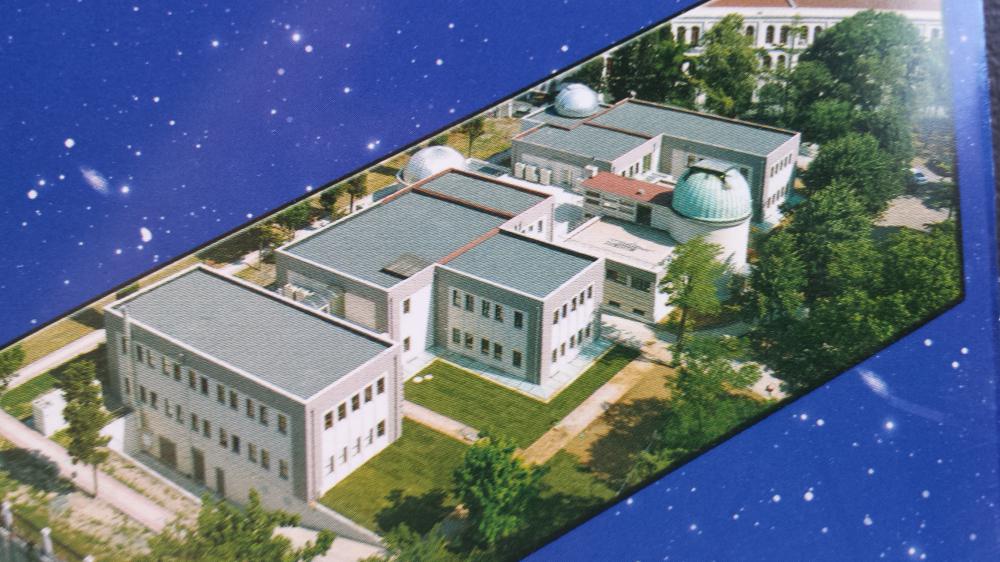
Fig. 1. Istanbul University Observatory, model (Photo: Gudrun Wolfschmidt)
The Istanbul University Observatory is next to the historic Beyazıt Tower within the main campus of the university at Beyazıt Square in Fatih district of Istanbul.

Fig. 2a. Beyazıt Tower of the main campus of Istanbul University (Photo: Gudrun Wolfschmidt)
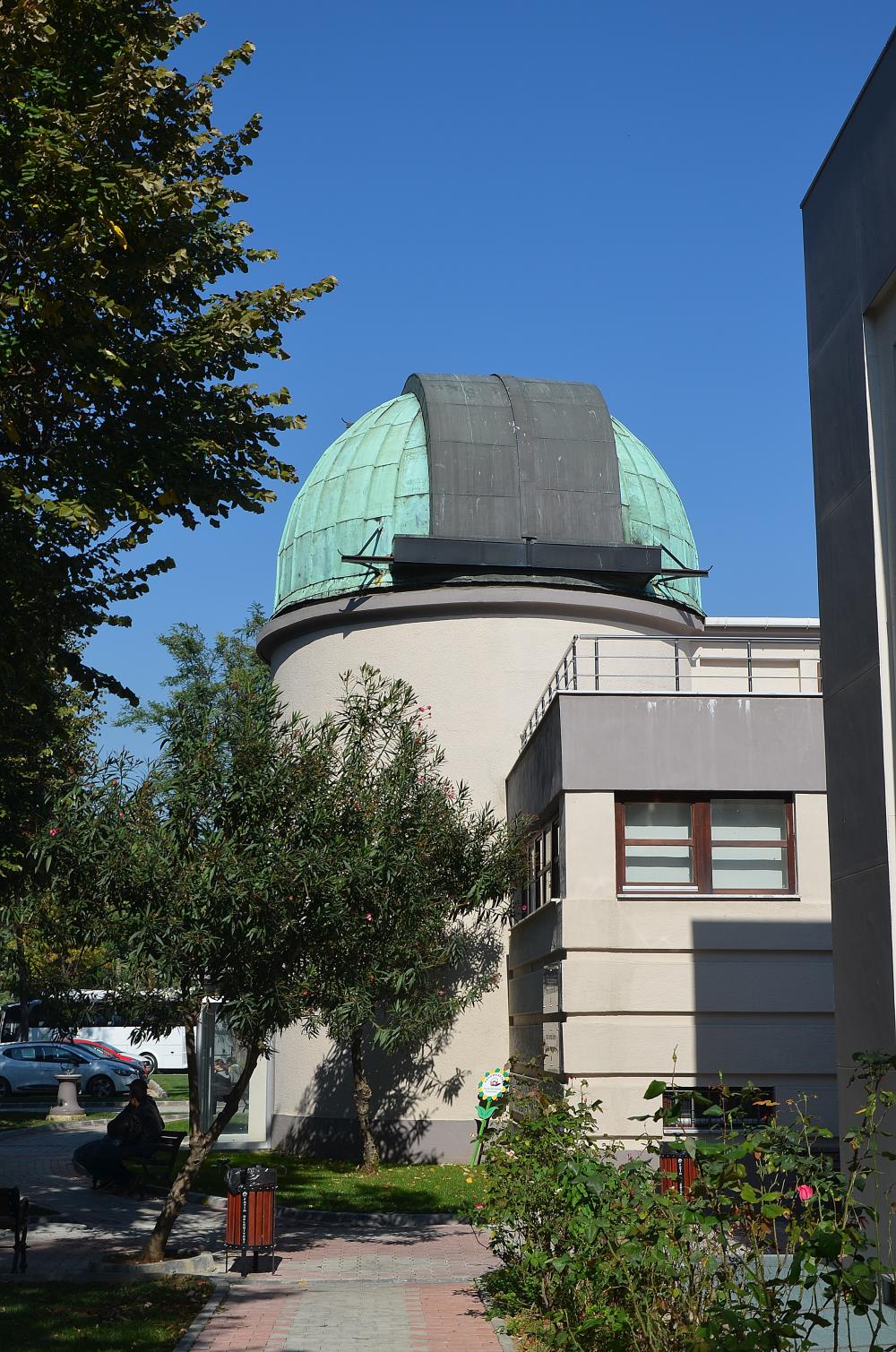
Fig. 2b. Istanbul University Observatory (1935/36) (Wikipedia 4, CeeGee)
The astronomer Erwin Finlay-Freundlich (1885--1964), who organized the Einstein Tower in Potsdam, was invited to become director of the Department of Astronomy and to erect an observatory. It was constructed by Ekrem Hakkı Ayverdi (1899--1984) (1935/36) -- influenced by Bauhaus style -- a very nice building.
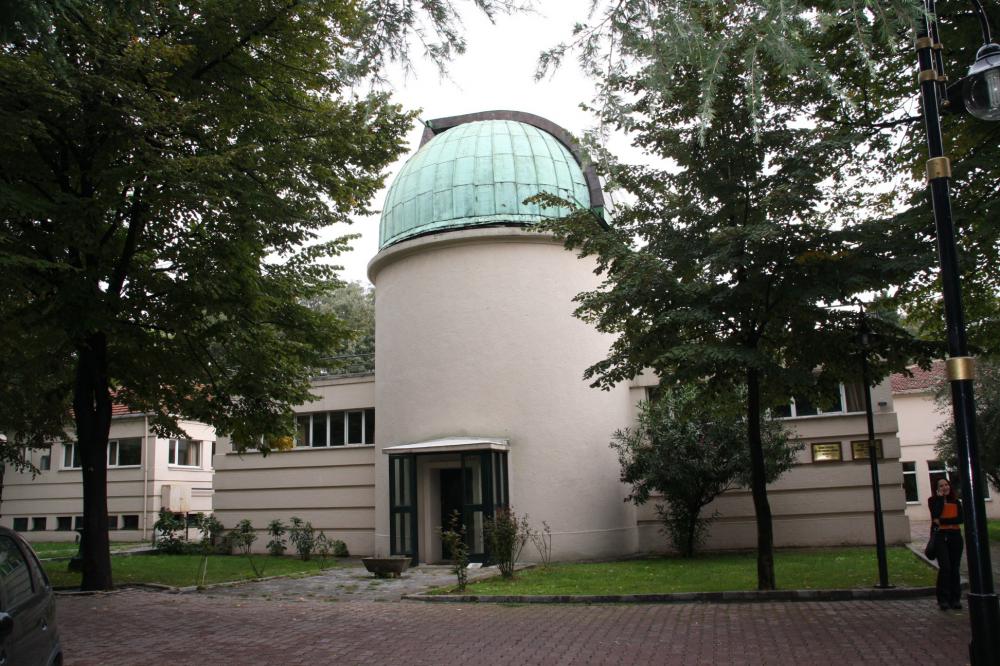
Fig. 3a. Dome of Istanbul University Observatory (Photo: Andreas Schrimpf)
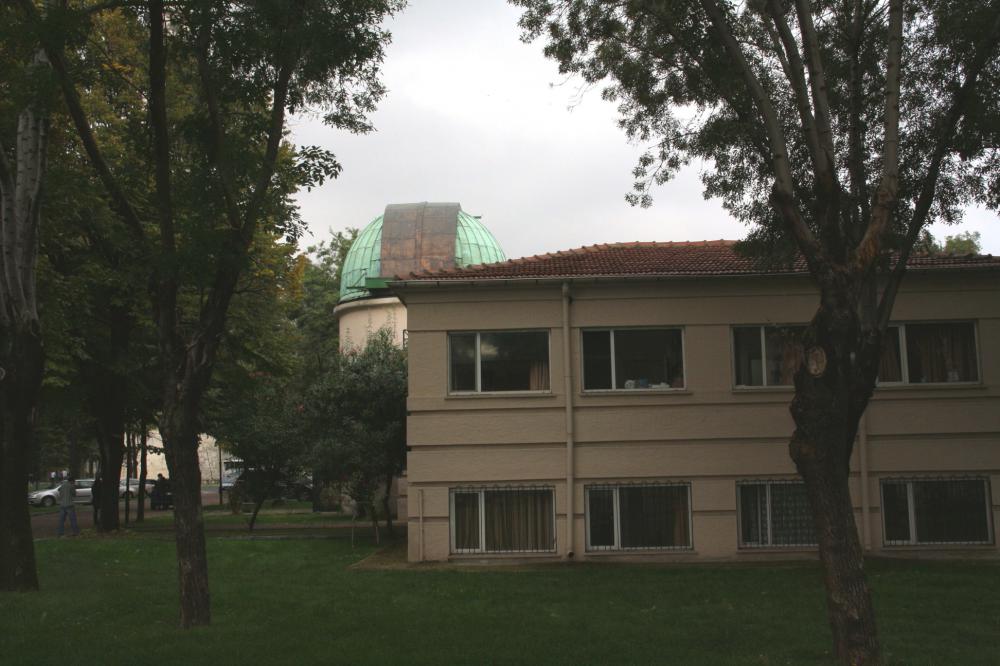
Fig. 3b. Istanbul University Observatory (Photo: Andreas Schrimpf)
History - InfoTheme: Astronomy from the Renaissance to the mid-twentieth century
Entity: 186
Subentity: 1
Version: 4
Status: PUB
Date: 2021-04-23 16:15:49
Author(s): Gudrun Wolfschmidt
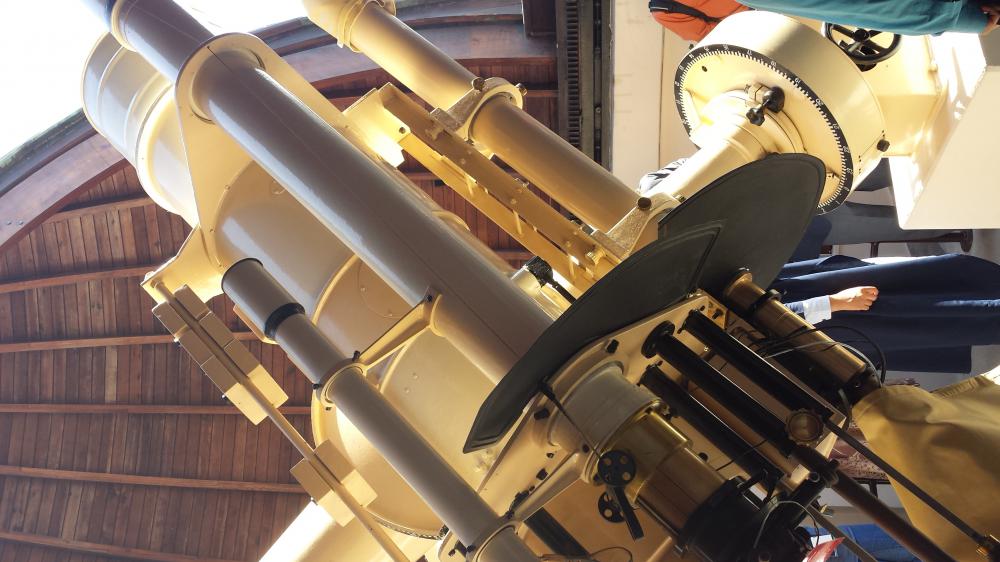
Fig. 4a. Telescopes of Istanbul University Observatory(Photo: Gudrun Wolfschmidt)
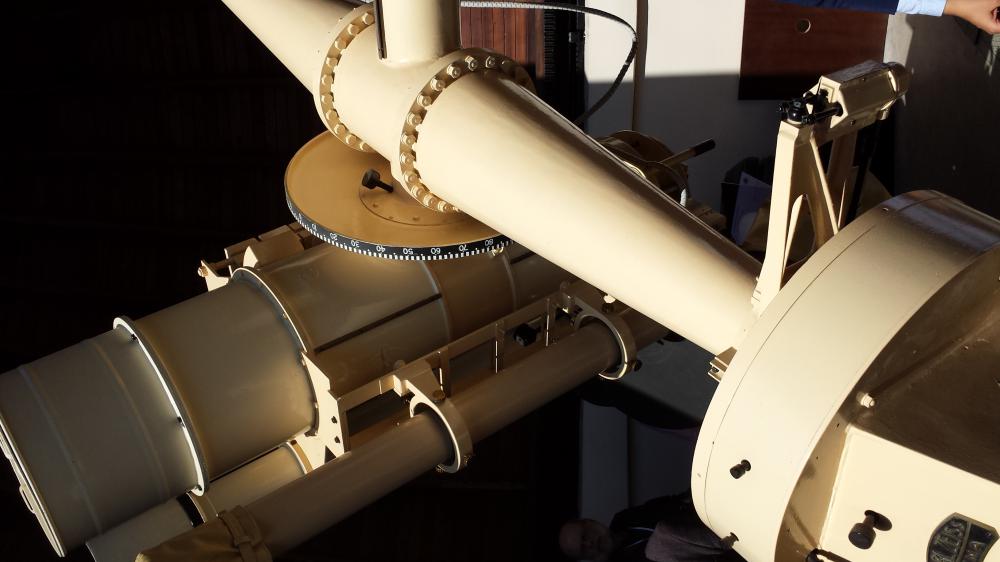
Fig. 4b. Telescopes of Istanbul University Observatory (Photo: Gudrun Wolfschmidt)
Instruments / Telescopes
- 30-cm-Astrograph (f=150cm, f/5), Carl Zeiss of Jena (1935)
- 13-cm-Photosphere telescope (f=200cm, f/15) for the observation of Sun spots and plage areas
- 12-cm-Chromosphere telescope (f=232cm, f/19) used with a monochromator (H-α Lyot filter) and a camera in the focal plane
- 7-cm-Pilot telescope (f=80cm, f/13)
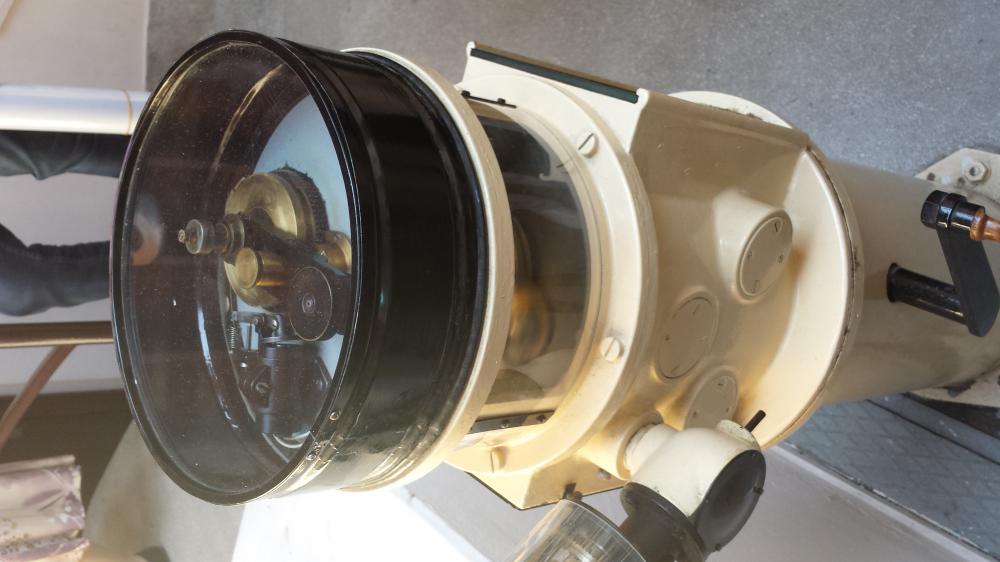
Fig. 5a. Apparatur for guiding the Telescope of Istanbul University Observatory (Photo: Gudrun Wolfschmidt)
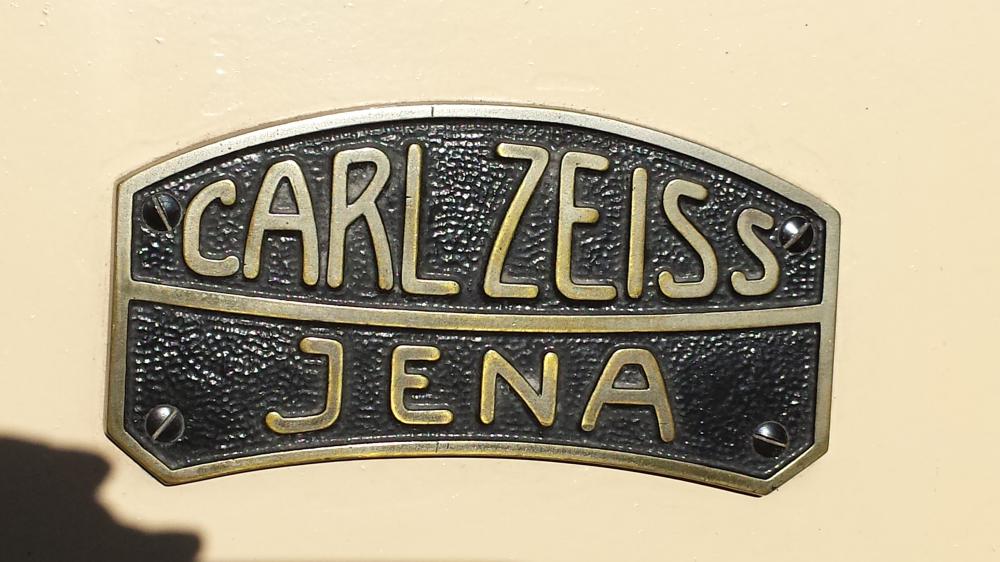
Fig. 5b. Zeiss logo (Photo: Gudrun Wolfschmidt)
State of preservation - InfoTheme: Astronomy from the Renaissance to the mid-twentieth century
Entity: 186
Subentity: 1
Version: 3
Status: PUB
Date: 2021-04-23 16:16:35
Author(s): Gudrun Wolfschmidt
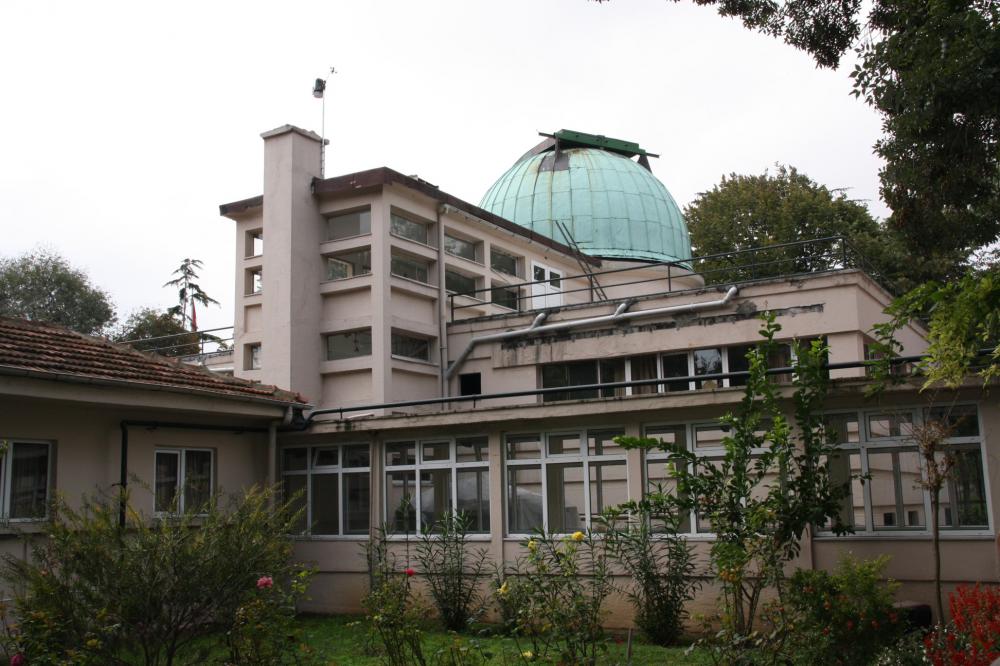
Fig. 6. Istanbul University Observatory (Photo: Andreas Schrimpf)
The observatory is preserved well, impressive architecture -- Bauhaus style.
Also the telescopes are in good condition.
Comparison with related/similar sites - InfoTheme: Astronomy from the Renaissance to the mid-twentieth century
Entity: 186
Subentity: 1
Version: 3
Status: PUB
Date: 2021-04-23 16:19:11
Author(s): Gudrun Wolfschmidt
Cf. Dresden, Germany, and Belgrade, Serbia (also Bauhaus style).
Threats or potential threats - InfoTheme: Astronomy from the Renaissance to the mid-twentieth century
Entity: 186
Subentity: 1
Version: 2
Status: PUB
Date: 2021-04-21 04:44:06
Author(s): Gudrun Wolfschmidt
no threats
Present use - InfoTheme: Astronomy from the Renaissance to the mid-twentieth century
Entity: 186
Subentity: 1
Version: 5
Status: PUB
Date: 2021-04-23 16:18:01
Author(s): Gudrun Wolfschmidt
The Observatory is still used by astronomers, but observing in the city center is difficult.
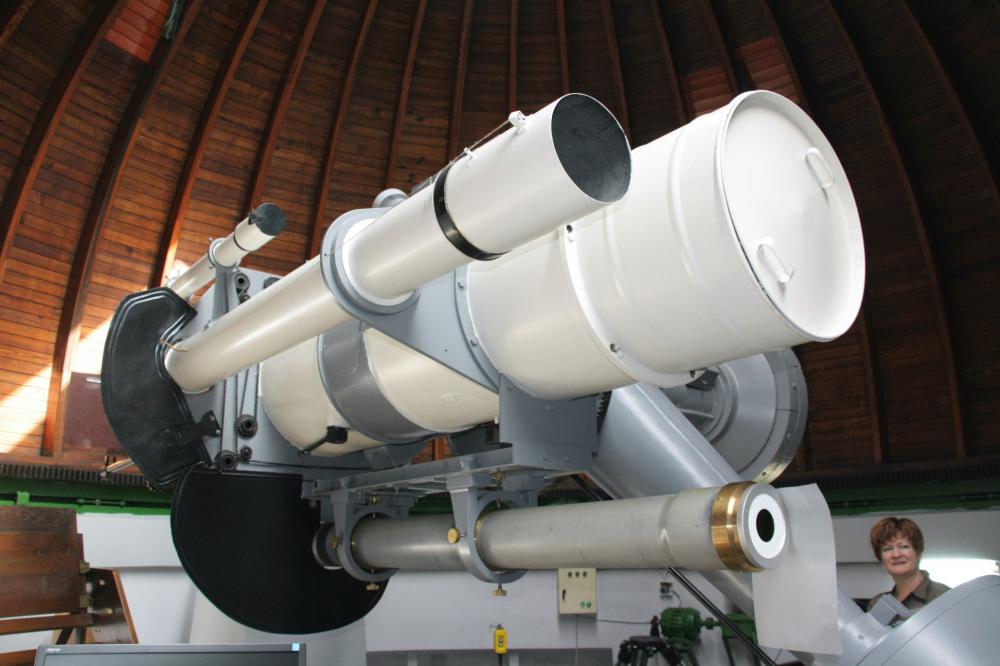
Fig. 7a. Istanbul University Observatory (Photo: Andreas Schrimpf)
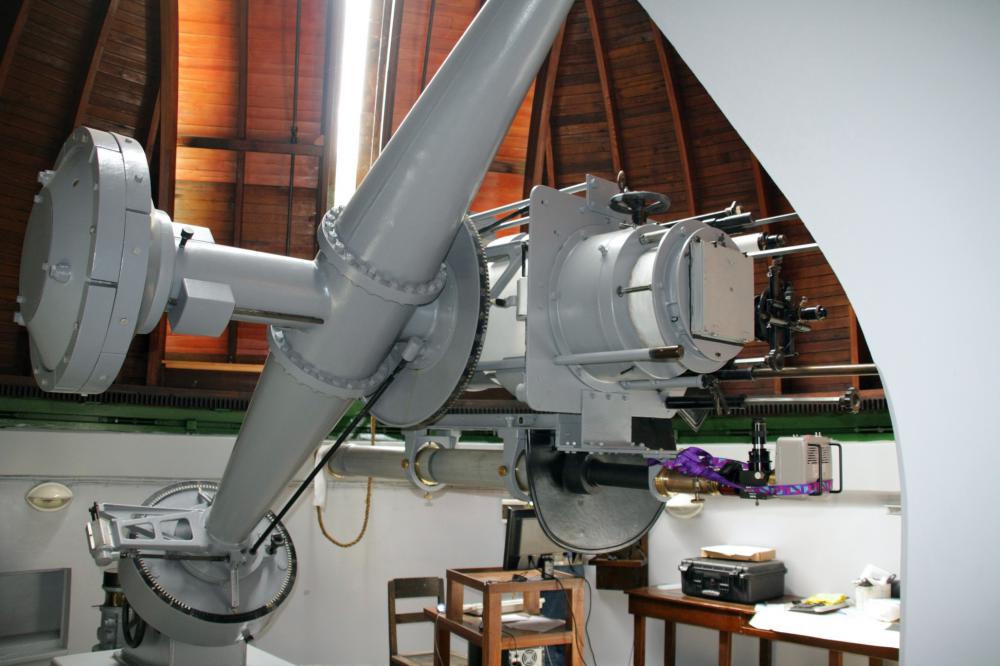
Fig. 7b. Istanbul University Observatory (Photo: Andreas Schrimpf)
Astronomical relevance today - InfoTheme: Astronomy from the Renaissance to the mid-twentieth century
Entity: 186
Subentity: 1
Version: 4
Status: PUB
Date: 2021-04-23 17:00:51
Author(s): Gudrun Wolfschmidt
An observatory at the Çanakkale Onsekiz Mart University was built in 2002: the ÇOMÜ Ulupınar Observatory (UPO) -- in a height of 410m far away from the city, providing much better observing conditions.
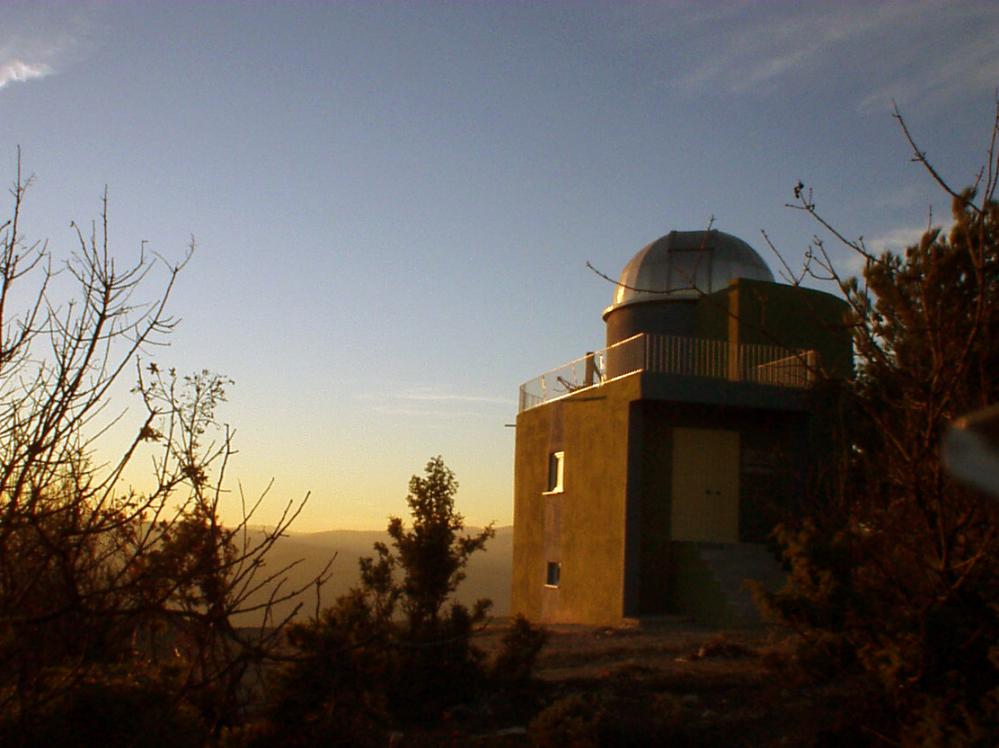
Fig. 8. ÇOMÜ Ulupınar Observatory (UPO) (2002), Çanakkale Onsekiz Mart University (Wikipedia 4, Balabinrm)
References
Bibliography (books and published articles) - InfoTheme: Astronomy from the Renaissance to the mid-twentieth century
Entity: 186
Subentity: 1
Version: 2
Status: PUB
Date: 2021-04-21 04:46:08
Author(s): Gudrun Wolfschmidt
- Bolt, M.; Hockey, T.; Palmeri, J.A.; Trimble, V.; Williams, T.R.; Bracher, K.; Jarrell, R.; Marché, J.D.; Ragep, F.J.: Fatin Gökmen. In: Biographical Encyclopedia of Astronomers. New York: Springer 2007, p. 427.
- Hockey, Thomas et al. (eds.): Salih Zeki. In: The Biographical Encyclopedia of Astronomers. Springer Reference. New York: Springer 2007, pp. 1007--1008 (http://dx.doi.org/10.1007/978-0-387-30400-7_1211).
- Ihsano&gcaron;lu, Ekmeleddin: Ottoman Educational and Scholarly-Scientific Institutions. In: History of the Ottoman State, Society and Civilisation, vol. 2. Ed. Ekmeleddin d{I}hsanov{g}lu. Istanbul: IRCICA 2002, p. 361--512.
- Ihsano&gcaron;lu, Ekmeleddin: The Introduction of Western Science to the Ottoman World: A Case Study of Modern Astronomy (1660--1860). In: Science, technology and learning in the Ottoman Empire: Western influence, local institutions, and the transfer of knowledge. Ed. by Ihsanoglu, E.; Aldershot, Hants, England; Burlington, VT: Ashgate Publishing Company (Variorum Collected Studies) 2004.
- Sayili, Aydin: The Observatory in Islam. Ankara: Türk Tarih Kurumu 1991, p. 289-305.
- Sayili, Aydin: Alauddin Mansur’un Istanbul Rasathânesi Hakkindaki Siirleri. In: Belleten 20 (1956), no. 79, p. 414, 466.
Links to external sites - InfoTheme: Astronomy from the Renaissance to the mid-twentieth century
Entity: 186
Subentity: 1
Version: 4
Status: PUB
Date: 2021-04-23 17:01:21
Author(s): Gudrun Wolfschmidt
- Web - Istanbul University Observatory
- Istanbul Üniversitesi Fen Fakültesi Gözlemevi
- ÇOMÜ Ulupınar Observatory (UPO), Wikipedia
PrintPrint contents of 'Description' tab
(opens in a new window) Theme
Astronomy from the Renaissance to the mid-twentieth century
Case Study Navigation
- InfoTheme: Astronomy from the Renaissance to the mid-twentieth century
Entity: 186
Subentity: 1
Version: 2
Status: PUB
Date: 2021-04-21 04:36:48
Author(s): Gudrun Wolfschmidt
Istanbul University Observatory, Astronomy and Space Sciences Department, Istanbul, Turkey
Location - InfoTheme: Astronomy from the Renaissance to the mid-twentieth century
Entity: 186
Subentity: 1
Version: 2
Status: PUB
Date: 2021-04-21 04:37:44
Author(s): Gudrun Wolfschmidt
Latitude 41°00’45’’N, Longitude 28°57’56’’E, Elevation ...m above mean sea level.
IAU observatory code - InfoTheme: Astronomy from the Renaissance to the mid-twentieth century
Entity: 186
Subentity: 1
Version: 1
Status: PUB
Date: 2021-04-21 02:04:29
Author(s): Gudrun Wolfschmidt
080
Description of (scientific/cultural/natural) heritage - InfoTheme: Astronomy from the Renaissance to the mid-twentieth century
Entity: 186
Subentity: 1
Version: 6
Status: PUB
Date: 2021-04-23 16:14:43
Author(s): Gudrun Wolfschmidt

Fig. 1. Istanbul University Observatory, model (Photo: Gudrun Wolfschmidt)
The Istanbul University Observatory is next to the historic Beyazıt Tower within the main campus of the university at Beyazıt Square in Fatih district of Istanbul.

Fig. 2a. Beyazıt Tower of the main campus of Istanbul University (Photo: Gudrun Wolfschmidt)

Fig. 2b. Istanbul University Observatory (1935/36) (Wikipedia 4, CeeGee)
The astronomer Erwin Finlay-Freundlich (1885--1964), who organized the Einstein Tower in Potsdam, was invited to become director of the Department of Astronomy and to erect an observatory. It was constructed by Ekrem Hakkı Ayverdi (1899--1984) (1935/36) -- influenced by Bauhaus style -- a very nice building.

Fig. 3a. Dome of Istanbul University Observatory (Photo: Andreas Schrimpf)

Fig. 3b. Istanbul University Observatory (Photo: Andreas Schrimpf)
History - InfoTheme: Astronomy from the Renaissance to the mid-twentieth century
Entity: 186
Subentity: 1
Version: 4
Status: PUB
Date: 2021-04-23 16:15:49
Author(s): Gudrun Wolfschmidt

Fig. 4a. Telescopes of Istanbul University Observatory(Photo: Gudrun Wolfschmidt)

Fig. 4b. Telescopes of Istanbul University Observatory (Photo: Gudrun Wolfschmidt)
Instruments / Telescopes
- 30-cm-Astrograph (f=150cm, f/5), Carl Zeiss of Jena (1935)
- 13-cm-Photosphere telescope (f=200cm, f/15) for the observation of Sun spots and plage areas
- 12-cm-Chromosphere telescope (f=232cm, f/19) used with a monochromator (H-α Lyot filter) and a camera in the focal plane
- 7-cm-Pilot telescope (f=80cm, f/13)

Fig. 5a. Apparatur for guiding the Telescope of Istanbul University Observatory (Photo: Gudrun Wolfschmidt)

Fig. 5b. Zeiss logo (Photo: Gudrun Wolfschmidt)
State of preservation - InfoTheme: Astronomy from the Renaissance to the mid-twentieth century
Entity: 186
Subentity: 1
Version: 3
Status: PUB
Date: 2021-04-23 16:16:35
Author(s): Gudrun Wolfschmidt

Fig. 6. Istanbul University Observatory (Photo: Andreas Schrimpf)
The observatory is preserved well, impressive architecture -- Bauhaus style.
Also the telescopes are in good condition.
Comparison with related/similar sites - InfoTheme: Astronomy from the Renaissance to the mid-twentieth century
Entity: 186
Subentity: 1
Version: 3
Status: PUB
Date: 2021-04-23 16:19:11
Author(s): Gudrun Wolfschmidt
Cf. Dresden, Germany, and Belgrade, Serbia (also Bauhaus style).
Threats or potential threats - InfoTheme: Astronomy from the Renaissance to the mid-twentieth century
Entity: 186
Subentity: 1
Version: 2
Status: PUB
Date: 2021-04-21 04:44:06
Author(s): Gudrun Wolfschmidt
no threats
Present use - InfoTheme: Astronomy from the Renaissance to the mid-twentieth century
Entity: 186
Subentity: 1
Version: 5
Status: PUB
Date: 2021-04-23 16:18:01
Author(s): Gudrun Wolfschmidt
The Observatory is still used by astronomers, but observing in the city center is difficult.

Fig. 7a. Istanbul University Observatory (Photo: Andreas Schrimpf)

Fig. 7b. Istanbul University Observatory (Photo: Andreas Schrimpf)
Astronomical relevance today - InfoTheme: Astronomy from the Renaissance to the mid-twentieth century
Entity: 186
Subentity: 1
Version: 4
Status: PUB
Date: 2021-04-23 17:00:51
Author(s): Gudrun Wolfschmidt
An observatory at the Çanakkale Onsekiz Mart University was built in 2002: the ÇOMÜ Ulupınar Observatory (UPO) -- in a height of 410m far away from the city, providing much better observing conditions.

Fig. 8. ÇOMÜ Ulupınar Observatory (UPO) (2002), Çanakkale Onsekiz Mart University (Wikipedia 4, Balabinrm)
References
Bibliography (books and published articles) - InfoTheme: Astronomy from the Renaissance to the mid-twentieth century
Entity: 186
Subentity: 1
Version: 2
Status: PUB
Date: 2021-04-21 04:46:08
Author(s): Gudrun Wolfschmidt
- Bolt, M.; Hockey, T.; Palmeri, J.A.; Trimble, V.; Williams, T.R.; Bracher, K.; Jarrell, R.; Marché, J.D.; Ragep, F.J.: Fatin Gökmen. In: Biographical Encyclopedia of Astronomers. New York: Springer 2007, p. 427.
- Hockey, Thomas et al. (eds.): Salih Zeki. In: The Biographical Encyclopedia of Astronomers. Springer Reference. New York: Springer 2007, pp. 1007--1008 (http://dx.doi.org/10.1007/978-0-387-30400-7_1211).
- Ihsano&gcaron;lu, Ekmeleddin: Ottoman Educational and Scholarly-Scientific Institutions. In: History of the Ottoman State, Society and Civilisation, vol. 2. Ed. Ekmeleddin d{I}hsanov{g}lu. Istanbul: IRCICA 2002, p. 361--512.
- Ihsano&gcaron;lu, Ekmeleddin: The Introduction of Western Science to the Ottoman World: A Case Study of Modern Astronomy (1660--1860). In: Science, technology and learning in the Ottoman Empire: Western influence, local institutions, and the transfer of knowledge. Ed. by Ihsanoglu, E.; Aldershot, Hants, England; Burlington, VT: Ashgate Publishing Company (Variorum Collected Studies) 2004.
- Sayili, Aydin: The Observatory in Islam. Ankara: Türk Tarih Kurumu 1991, p. 289-305.
- Sayili, Aydin: Alauddin Mansur’un Istanbul Rasathânesi Hakkindaki Siirleri. In: Belleten 20 (1956), no. 79, p. 414, 466.
Links to external sites - InfoTheme: Astronomy from the Renaissance to the mid-twentieth century
Entity: 186
Subentity: 1
Version: 4
Status: PUB
Date: 2021-04-23 17:01:21
Author(s): Gudrun Wolfschmidt
- Web - Istanbul University Observatory
- Istanbul Üniversitesi Fen Fakültesi Gözlemevi
- ÇOMÜ Ulupınar Observatory (UPO), Wikipedia
PrintPrint contents of 'Description' tab
(opens in a new window) Theme
Astronomy from the Renaissance to the mid-twentieth century
Case Study Navigation
- InfoTheme: Astronomy from the Renaissance to the mid-twentieth century
Entity: 186
Subentity: 1
Version: 2
Status: PUB
Date: 2021-04-21 04:37:44
Author(s): Gudrun Wolfschmidt
Latitude 41°00’45’’N, Longitude 28°57’56’’E, Elevation ...m above mean sea level.
IAU observatory code - InfoTheme: Astronomy from the Renaissance to the mid-twentieth century
Entity: 186
Subentity: 1
Version: 1
Status: PUB
Date: 2021-04-21 02:04:29
Author(s): Gudrun Wolfschmidt
080
Description of (scientific/cultural/natural) heritage - InfoTheme: Astronomy from the Renaissance to the mid-twentieth century
Entity: 186
Subentity: 1
Version: 6
Status: PUB
Date: 2021-04-23 16:14:43
Author(s): Gudrun Wolfschmidt

Fig. 1. Istanbul University Observatory, model (Photo: Gudrun Wolfschmidt)
The Istanbul University Observatory is next to the historic Beyazıt Tower within the main campus of the university at Beyazıt Square in Fatih district of Istanbul.

Fig. 2a. Beyazıt Tower of the main campus of Istanbul University (Photo: Gudrun Wolfschmidt)

Fig. 2b. Istanbul University Observatory (1935/36) (Wikipedia 4, CeeGee)
The astronomer Erwin Finlay-Freundlich (1885--1964), who organized the Einstein Tower in Potsdam, was invited to become director of the Department of Astronomy and to erect an observatory. It was constructed by Ekrem Hakkı Ayverdi (1899--1984) (1935/36) -- influenced by Bauhaus style -- a very nice building.

Fig. 3a. Dome of Istanbul University Observatory (Photo: Andreas Schrimpf)

Fig. 3b. Istanbul University Observatory (Photo: Andreas Schrimpf)
History - InfoTheme: Astronomy from the Renaissance to the mid-twentieth century
Entity: 186
Subentity: 1
Version: 4
Status: PUB
Date: 2021-04-23 16:15:49
Author(s): Gudrun Wolfschmidt

Fig. 4a. Telescopes of Istanbul University Observatory(Photo: Gudrun Wolfschmidt)

Fig. 4b. Telescopes of Istanbul University Observatory (Photo: Gudrun Wolfschmidt)
Instruments / Telescopes
- 30-cm-Astrograph (f=150cm, f/5), Carl Zeiss of Jena (1935)
- 13-cm-Photosphere telescope (f=200cm, f/15) for the observation of Sun spots and plage areas
- 12-cm-Chromosphere telescope (f=232cm, f/19) used with a monochromator (H-α Lyot filter) and a camera in the focal plane
- 7-cm-Pilot telescope (f=80cm, f/13)

Fig. 5a. Apparatur for guiding the Telescope of Istanbul University Observatory (Photo: Gudrun Wolfschmidt)

Fig. 5b. Zeiss logo (Photo: Gudrun Wolfschmidt)
State of preservation - InfoTheme: Astronomy from the Renaissance to the mid-twentieth century
Entity: 186
Subentity: 1
Version: 3
Status: PUB
Date: 2021-04-23 16:16:35
Author(s): Gudrun Wolfschmidt

Fig. 6. Istanbul University Observatory (Photo: Andreas Schrimpf)
The observatory is preserved well, impressive architecture -- Bauhaus style.
Also the telescopes are in good condition.
Comparison with related/similar sites - InfoTheme: Astronomy from the Renaissance to the mid-twentieth century
Entity: 186
Subentity: 1
Version: 3
Status: PUB
Date: 2021-04-23 16:19:11
Author(s): Gudrun Wolfschmidt
Cf. Dresden, Germany, and Belgrade, Serbia (also Bauhaus style).
Threats or potential threats - InfoTheme: Astronomy from the Renaissance to the mid-twentieth century
Entity: 186
Subentity: 1
Version: 2
Status: PUB
Date: 2021-04-21 04:44:06
Author(s): Gudrun Wolfschmidt
no threats
Present use - InfoTheme: Astronomy from the Renaissance to the mid-twentieth century
Entity: 186
Subentity: 1
Version: 5
Status: PUB
Date: 2021-04-23 16:18:01
Author(s): Gudrun Wolfschmidt
The Observatory is still used by astronomers, but observing in the city center is difficult.

Fig. 7a. Istanbul University Observatory (Photo: Andreas Schrimpf)

Fig. 7b. Istanbul University Observatory (Photo: Andreas Schrimpf)
Astronomical relevance today - InfoTheme: Astronomy from the Renaissance to the mid-twentieth century
Entity: 186
Subentity: 1
Version: 4
Status: PUB
Date: 2021-04-23 17:00:51
Author(s): Gudrun Wolfschmidt
An observatory at the Çanakkale Onsekiz Mart University was built in 2002: the ÇOMÜ Ulupınar Observatory (UPO) -- in a height of 410m far away from the city, providing much better observing conditions.

Fig. 8. ÇOMÜ Ulupınar Observatory (UPO) (2002), Çanakkale Onsekiz Mart University (Wikipedia 4, Balabinrm)
References
Bibliography (books and published articles) - InfoTheme: Astronomy from the Renaissance to the mid-twentieth century
Entity: 186
Subentity: 1
Version: 2
Status: PUB
Date: 2021-04-21 04:46:08
Author(s): Gudrun Wolfschmidt
- Bolt, M.; Hockey, T.; Palmeri, J.A.; Trimble, V.; Williams, T.R.; Bracher, K.; Jarrell, R.; Marché, J.D.; Ragep, F.J.: Fatin Gökmen. In: Biographical Encyclopedia of Astronomers. New York: Springer 2007, p. 427.
- Hockey, Thomas et al. (eds.): Salih Zeki. In: The Biographical Encyclopedia of Astronomers. Springer Reference. New York: Springer 2007, pp. 1007--1008 (http://dx.doi.org/10.1007/978-0-387-30400-7_1211).
- Ihsano&gcaron;lu, Ekmeleddin: Ottoman Educational and Scholarly-Scientific Institutions. In: History of the Ottoman State, Society and Civilisation, vol. 2. Ed. Ekmeleddin d{I}hsanov{g}lu. Istanbul: IRCICA 2002, p. 361--512.
- Ihsano&gcaron;lu, Ekmeleddin: The Introduction of Western Science to the Ottoman World: A Case Study of Modern Astronomy (1660--1860). In: Science, technology and learning in the Ottoman Empire: Western influence, local institutions, and the transfer of knowledge. Ed. by Ihsanoglu, E.; Aldershot, Hants, England; Burlington, VT: Ashgate Publishing Company (Variorum Collected Studies) 2004.
- Sayili, Aydin: The Observatory in Islam. Ankara: Türk Tarih Kurumu 1991, p. 289-305.
- Sayili, Aydin: Alauddin Mansur’un Istanbul Rasathânesi Hakkindaki Siirleri. In: Belleten 20 (1956), no. 79, p. 414, 466.
Links to external sites - InfoTheme: Astronomy from the Renaissance to the mid-twentieth century
Entity: 186
Subentity: 1
Version: 4
Status: PUB
Date: 2021-04-23 17:01:21
Author(s): Gudrun Wolfschmidt
- Web - Istanbul University Observatory
- Istanbul Üniversitesi Fen Fakültesi Gözlemevi
- ÇOMÜ Ulupınar Observatory (UPO), Wikipedia
PrintPrint contents of 'Description' tab
(opens in a new window) Theme
Astronomy from the Renaissance to the mid-twentieth century
Case Study Navigation
- InfoTheme: Astronomy from the Renaissance to the mid-twentieth century
Entity: 186
Subentity: 1
Version: 1
Status: PUB
Date: 2021-04-21 02:04:29
Author(s): Gudrun Wolfschmidt
080
Description of (scientific/cultural/natural) heritage - InfoTheme: Astronomy from the Renaissance to the mid-twentieth century
Entity: 186
Subentity: 1
Version: 6
Status: PUB
Date: 2021-04-23 16:14:43
Author(s): Gudrun Wolfschmidt

Fig. 1. Istanbul University Observatory, model (Photo: Gudrun Wolfschmidt)
The Istanbul University Observatory is next to the historic Beyazıt Tower within the main campus of the university at Beyazıt Square in Fatih district of Istanbul.

Fig. 2a. Beyazıt Tower of the main campus of Istanbul University (Photo: Gudrun Wolfschmidt)

Fig. 2b. Istanbul University Observatory (1935/36) (Wikipedia 4, CeeGee)
The astronomer Erwin Finlay-Freundlich (1885--1964), who organized the Einstein Tower in Potsdam, was invited to become director of the Department of Astronomy and to erect an observatory. It was constructed by Ekrem Hakkı Ayverdi (1899--1984) (1935/36) -- influenced by Bauhaus style -- a very nice building.

Fig. 3a. Dome of Istanbul University Observatory (Photo: Andreas Schrimpf)

Fig. 3b. Istanbul University Observatory (Photo: Andreas Schrimpf)
History - InfoTheme: Astronomy from the Renaissance to the mid-twentieth century
Entity: 186
Subentity: 1
Version: 4
Status: PUB
Date: 2021-04-23 16:15:49
Author(s): Gudrun Wolfschmidt

Fig. 4a. Telescopes of Istanbul University Observatory(Photo: Gudrun Wolfschmidt)

Fig. 4b. Telescopes of Istanbul University Observatory (Photo: Gudrun Wolfschmidt)
Instruments / Telescopes
- 30-cm-Astrograph (f=150cm, f/5), Carl Zeiss of Jena (1935)
- 13-cm-Photosphere telescope (f=200cm, f/15) for the observation of Sun spots and plage areas
- 12-cm-Chromosphere telescope (f=232cm, f/19) used with a monochromator (H-α Lyot filter) and a camera in the focal plane
- 7-cm-Pilot telescope (f=80cm, f/13)

Fig. 5a. Apparatur for guiding the Telescope of Istanbul University Observatory (Photo: Gudrun Wolfschmidt)

Fig. 5b. Zeiss logo (Photo: Gudrun Wolfschmidt)
State of preservation - InfoTheme: Astronomy from the Renaissance to the mid-twentieth century
Entity: 186
Subentity: 1
Version: 3
Status: PUB
Date: 2021-04-23 16:16:35
Author(s): Gudrun Wolfschmidt

Fig. 6. Istanbul University Observatory (Photo: Andreas Schrimpf)
The observatory is preserved well, impressive architecture -- Bauhaus style.
Also the telescopes are in good condition.
Comparison with related/similar sites - InfoTheme: Astronomy from the Renaissance to the mid-twentieth century
Entity: 186
Subentity: 1
Version: 3
Status: PUB
Date: 2021-04-23 16:19:11
Author(s): Gudrun Wolfschmidt
Cf. Dresden, Germany, and Belgrade, Serbia (also Bauhaus style).
Threats or potential threats - InfoTheme: Astronomy from the Renaissance to the mid-twentieth century
Entity: 186
Subentity: 1
Version: 2
Status: PUB
Date: 2021-04-21 04:44:06
Author(s): Gudrun Wolfschmidt
no threats
Present use - InfoTheme: Astronomy from the Renaissance to the mid-twentieth century
Entity: 186
Subentity: 1
Version: 5
Status: PUB
Date: 2021-04-23 16:18:01
Author(s): Gudrun Wolfschmidt
The Observatory is still used by astronomers, but observing in the city center is difficult.

Fig. 7a. Istanbul University Observatory (Photo: Andreas Schrimpf)

Fig. 7b. Istanbul University Observatory (Photo: Andreas Schrimpf)
Astronomical relevance today - InfoTheme: Astronomy from the Renaissance to the mid-twentieth century
Entity: 186
Subentity: 1
Version: 4
Status: PUB
Date: 2021-04-23 17:00:51
Author(s): Gudrun Wolfschmidt
An observatory at the Çanakkale Onsekiz Mart University was built in 2002: the ÇOMÜ Ulupınar Observatory (UPO) -- in a height of 410m far away from the city, providing much better observing conditions.

Fig. 8. ÇOMÜ Ulupınar Observatory (UPO) (2002), Çanakkale Onsekiz Mart University (Wikipedia 4, Balabinrm)
References
Bibliography (books and published articles) - InfoTheme: Astronomy from the Renaissance to the mid-twentieth century
Entity: 186
Subentity: 1
Version: 2
Status: PUB
Date: 2021-04-21 04:46:08
Author(s): Gudrun Wolfschmidt
- Bolt, M.; Hockey, T.; Palmeri, J.A.; Trimble, V.; Williams, T.R.; Bracher, K.; Jarrell, R.; Marché, J.D.; Ragep, F.J.: Fatin Gökmen. In: Biographical Encyclopedia of Astronomers. New York: Springer 2007, p. 427.
- Hockey, Thomas et al. (eds.): Salih Zeki. In: The Biographical Encyclopedia of Astronomers. Springer Reference. New York: Springer 2007, pp. 1007--1008 (http://dx.doi.org/10.1007/978-0-387-30400-7_1211).
- Ihsano&gcaron;lu, Ekmeleddin: Ottoman Educational and Scholarly-Scientific Institutions. In: History of the Ottoman State, Society and Civilisation, vol. 2. Ed. Ekmeleddin d{I}hsanov{g}lu. Istanbul: IRCICA 2002, p. 361--512.
- Ihsano&gcaron;lu, Ekmeleddin: The Introduction of Western Science to the Ottoman World: A Case Study of Modern Astronomy (1660--1860). In: Science, technology and learning in the Ottoman Empire: Western influence, local institutions, and the transfer of knowledge. Ed. by Ihsanoglu, E.; Aldershot, Hants, England; Burlington, VT: Ashgate Publishing Company (Variorum Collected Studies) 2004.
- Sayili, Aydin: The Observatory in Islam. Ankara: Türk Tarih Kurumu 1991, p. 289-305.
- Sayili, Aydin: Alauddin Mansur’un Istanbul Rasathânesi Hakkindaki Siirleri. In: Belleten 20 (1956), no. 79, p. 414, 466.
Links to external sites - InfoTheme: Astronomy from the Renaissance to the mid-twentieth century
Entity: 186
Subentity: 1
Version: 4
Status: PUB
Date: 2021-04-23 17:01:21
Author(s): Gudrun Wolfschmidt
- Web - Istanbul University Observatory
- Istanbul Üniversitesi Fen Fakültesi Gözlemevi
- ÇOMÜ Ulupınar Observatory (UPO), Wikipedia
PrintPrint contents of 'Description' tab
(opens in a new window) Theme
Astronomy from the Renaissance to the mid-twentieth century
Case Study Navigation
- InfoTheme: Astronomy from the Renaissance to the mid-twentieth century
Entity: 186
Subentity: 1
Version: 6
Status: PUB
Date: 2021-04-23 16:14:43
Author(s): Gudrun Wolfschmidt

Fig. 1. Istanbul University Observatory, model (Photo: Gudrun Wolfschmidt)
The Istanbul University Observatory is next to the historic Beyazıt Tower within the main campus of the university at Beyazıt Square in Fatih district of Istanbul.

Fig. 2a. Beyazıt Tower of the main campus of Istanbul University (Photo: Gudrun Wolfschmidt)

Fig. 2b. Istanbul University Observatory (1935/36) (Wikipedia 4, CeeGee)
The astronomer Erwin Finlay-Freundlich (1885--1964), who organized the Einstein Tower in Potsdam, was invited to become director of the Department of Astronomy and to erect an observatory. It was constructed by Ekrem Hakkı Ayverdi (1899--1984) (1935/36) -- influenced by Bauhaus style -- a very nice building.
Fig. 3a. Dome of Istanbul University Observatory (Photo: Andreas Schrimpf)

Fig. 3b. Istanbul University Observatory (Photo: Andreas Schrimpf)
History - InfoTheme: Astronomy from the Renaissance to the mid-twentieth century
Entity: 186
Subentity: 1
Version: 4
Status: PUB
Date: 2021-04-23 16:15:49
Author(s): Gudrun Wolfschmidt

Fig. 4a. Telescopes of Istanbul University Observatory(Photo: Gudrun Wolfschmidt)

Fig. 4b. Telescopes of Istanbul University Observatory (Photo: Gudrun Wolfschmidt)
Instruments / Telescopes
- 30-cm-Astrograph (f=150cm, f/5), Carl Zeiss of Jena (1935)
- 13-cm-Photosphere telescope (f=200cm, f/15) for the observation of Sun spots and plage areas
- 12-cm-Chromosphere telescope (f=232cm, f/19) used with a monochromator (H-α Lyot filter) and a camera in the focal plane
- 7-cm-Pilot telescope (f=80cm, f/13)

Fig. 5a. Apparatur for guiding the Telescope of Istanbul University Observatory (Photo: Gudrun Wolfschmidt)

Fig. 5b. Zeiss logo (Photo: Gudrun Wolfschmidt)
State of preservation - InfoTheme: Astronomy from the Renaissance to the mid-twentieth century
Entity: 186
Subentity: 1
Version: 3
Status: PUB
Date: 2021-04-23 16:16:35
Author(s): Gudrun Wolfschmidt

Fig. 6. Istanbul University Observatory (Photo: Andreas Schrimpf)
The observatory is preserved well, impressive architecture -- Bauhaus style.
Also the telescopes are in good condition.
Comparison with related/similar sites - InfoTheme: Astronomy from the Renaissance to the mid-twentieth century
Entity: 186
Subentity: 1
Version: 3
Status: PUB
Date: 2021-04-23 16:19:11
Author(s): Gudrun Wolfschmidt
Cf. Dresden, Germany, and Belgrade, Serbia (also Bauhaus style).
Threats or potential threats - InfoTheme: Astronomy from the Renaissance to the mid-twentieth century
Entity: 186
Subentity: 1
Version: 2
Status: PUB
Date: 2021-04-21 04:44:06
Author(s): Gudrun Wolfschmidt
no threats
Present use - InfoTheme: Astronomy from the Renaissance to the mid-twentieth century
Entity: 186
Subentity: 1
Version: 5
Status: PUB
Date: 2021-04-23 16:18:01
Author(s): Gudrun Wolfschmidt
The Observatory is still used by astronomers, but observing in the city center is difficult.

Fig. 7a. Istanbul University Observatory (Photo: Andreas Schrimpf)

Fig. 7b. Istanbul University Observatory (Photo: Andreas Schrimpf)
Astronomical relevance today - InfoTheme: Astronomy from the Renaissance to the mid-twentieth century
Entity: 186
Subentity: 1
Version: 4
Status: PUB
Date: 2021-04-23 17:00:51
Author(s): Gudrun Wolfschmidt
An observatory at the Çanakkale Onsekiz Mart University was built in 2002: the ÇOMÜ Ulupınar Observatory (UPO) -- in a height of 410m far away from the city, providing much better observing conditions.

Fig. 8. ÇOMÜ Ulupınar Observatory (UPO) (2002), Çanakkale Onsekiz Mart University (Wikipedia 4, Balabinrm)
References
Bibliography (books and published articles) - InfoTheme: Astronomy from the Renaissance to the mid-twentieth century
Entity: 186
Subentity: 1
Version: 2
Status: PUB
Date: 2021-04-21 04:46:08
Author(s): Gudrun Wolfschmidt
- Bolt, M.; Hockey, T.; Palmeri, J.A.; Trimble, V.; Williams, T.R.; Bracher, K.; Jarrell, R.; Marché, J.D.; Ragep, F.J.: Fatin Gökmen. In: Biographical Encyclopedia of Astronomers. New York: Springer 2007, p. 427.
- Hockey, Thomas et al. (eds.): Salih Zeki. In: The Biographical Encyclopedia of Astronomers. Springer Reference. New York: Springer 2007, pp. 1007--1008 (http://dx.doi.org/10.1007/978-0-387-30400-7_1211).
- Ihsano&gcaron;lu, Ekmeleddin: Ottoman Educational and Scholarly-Scientific Institutions. In: History of the Ottoman State, Society and Civilisation, vol. 2. Ed. Ekmeleddin d{I}hsanov{g}lu. Istanbul: IRCICA 2002, p. 361--512.
- Ihsano&gcaron;lu, Ekmeleddin: The Introduction of Western Science to the Ottoman World: A Case Study of Modern Astronomy (1660--1860). In: Science, technology and learning in the Ottoman Empire: Western influence, local institutions, and the transfer of knowledge. Ed. by Ihsanoglu, E.; Aldershot, Hants, England; Burlington, VT: Ashgate Publishing Company (Variorum Collected Studies) 2004.
- Sayili, Aydin: The Observatory in Islam. Ankara: Türk Tarih Kurumu 1991, p. 289-305.
- Sayili, Aydin: Alauddin Mansur’un Istanbul Rasathânesi Hakkindaki Siirleri. In: Belleten 20 (1956), no. 79, p. 414, 466.
Links to external sites - InfoTheme: Astronomy from the Renaissance to the mid-twentieth century
Entity: 186
Subentity: 1
Version: 4
Status: PUB
Date: 2021-04-23 17:01:21
Author(s): Gudrun Wolfschmidt
- Web - Istanbul University Observatory
- Istanbul Üniversitesi Fen Fakültesi Gözlemevi
- ÇOMÜ Ulupınar Observatory (UPO), Wikipedia
PrintPrint contents of 'Description' tab
(opens in a new window) Theme
Astronomy from the Renaissance to the mid-twentieth century
Case Study Navigation
- InfoTheme: Astronomy from the Renaissance to the mid-twentieth century
Entity: 186
Subentity: 1
Version: 4
Status: PUB
Date: 2021-04-23 16:15:49
Author(s): Gudrun Wolfschmidt

Fig. 4a. Telescopes of Istanbul University Observatory(Photo: Gudrun Wolfschmidt)

Fig. 4b. Telescopes of Istanbul University Observatory (Photo: Gudrun Wolfschmidt)
Instruments / Telescopes
- 30-cm-Astrograph (f=150cm, f/5), Carl Zeiss of Jena (1935)
- 13-cm-Photosphere telescope (f=200cm, f/15) for the observation of Sun spots and plage areas
- 12-cm-Chromosphere telescope (f=232cm, f/19) used with a monochromator (H-α Lyot filter) and a camera in the focal plane
- 7-cm-Pilot telescope (f=80cm, f/13)

Fig. 5a. Apparatur for guiding the Telescope of Istanbul University Observatory (Photo: Gudrun Wolfschmidt)

Fig. 5b. Zeiss logo (Photo: Gudrun Wolfschmidt)
State of preservation - InfoTheme: Astronomy from the Renaissance to the mid-twentieth century
Entity: 186
Subentity: 1
Version: 3
Status: PUB
Date: 2021-04-23 16:16:35
Author(s): Gudrun Wolfschmidt

Fig. 6. Istanbul University Observatory (Photo: Andreas Schrimpf)
The observatory is preserved well, impressive architecture -- Bauhaus style.
Also the telescopes are in good condition.
Comparison with related/similar sites - InfoTheme: Astronomy from the Renaissance to the mid-twentieth century
Entity: 186
Subentity: 1
Version: 3
Status: PUB
Date: 2021-04-23 16:19:11
Author(s): Gudrun Wolfschmidt
Cf. Dresden, Germany, and Belgrade, Serbia (also Bauhaus style).
Threats or potential threats - InfoTheme: Astronomy from the Renaissance to the mid-twentieth century
Entity: 186
Subentity: 1
Version: 2
Status: PUB
Date: 2021-04-21 04:44:06
Author(s): Gudrun Wolfschmidt
no threats
Present use - InfoTheme: Astronomy from the Renaissance to the mid-twentieth century
Entity: 186
Subentity: 1
Version: 5
Status: PUB
Date: 2021-04-23 16:18:01
Author(s): Gudrun Wolfschmidt
The Observatory is still used by astronomers, but observing in the city center is difficult.

Fig. 7a. Istanbul University Observatory (Photo: Andreas Schrimpf)

Fig. 7b. Istanbul University Observatory (Photo: Andreas Schrimpf)
Astronomical relevance today - InfoTheme: Astronomy from the Renaissance to the mid-twentieth century
Entity: 186
Subentity: 1
Version: 4
Status: PUB
Date: 2021-04-23 17:00:51
Author(s): Gudrun Wolfschmidt
An observatory at the Çanakkale Onsekiz Mart University was built in 2002: the ÇOMÜ Ulupınar Observatory (UPO) -- in a height of 410m far away from the city, providing much better observing conditions.

Fig. 8. ÇOMÜ Ulupınar Observatory (UPO) (2002), Çanakkale Onsekiz Mart University (Wikipedia 4, Balabinrm)
References
Bibliography (books and published articles) - InfoTheme: Astronomy from the Renaissance to the mid-twentieth century
Entity: 186
Subentity: 1
Version: 2
Status: PUB
Date: 2021-04-21 04:46:08
Author(s): Gudrun Wolfschmidt
- Bolt, M.; Hockey, T.; Palmeri, J.A.; Trimble, V.; Williams, T.R.; Bracher, K.; Jarrell, R.; Marché, J.D.; Ragep, F.J.: Fatin Gökmen. In: Biographical Encyclopedia of Astronomers. New York: Springer 2007, p. 427.
- Hockey, Thomas et al. (eds.): Salih Zeki. In: The Biographical Encyclopedia of Astronomers. Springer Reference. New York: Springer 2007, pp. 1007--1008 (http://dx.doi.org/10.1007/978-0-387-30400-7_1211).
- Ihsano&gcaron;lu, Ekmeleddin: Ottoman Educational and Scholarly-Scientific Institutions. In: History of the Ottoman State, Society and Civilisation, vol. 2. Ed. Ekmeleddin d{I}hsanov{g}lu. Istanbul: IRCICA 2002, p. 361--512.
- Ihsano&gcaron;lu, Ekmeleddin: The Introduction of Western Science to the Ottoman World: A Case Study of Modern Astronomy (1660--1860). In: Science, technology and learning in the Ottoman Empire: Western influence, local institutions, and the transfer of knowledge. Ed. by Ihsanoglu, E.; Aldershot, Hants, England; Burlington, VT: Ashgate Publishing Company (Variorum Collected Studies) 2004.
- Sayili, Aydin: The Observatory in Islam. Ankara: Türk Tarih Kurumu 1991, p. 289-305.
- Sayili, Aydin: Alauddin Mansur’un Istanbul Rasathânesi Hakkindaki Siirleri. In: Belleten 20 (1956), no. 79, p. 414, 466.
Links to external sites - InfoTheme: Astronomy from the Renaissance to the mid-twentieth century
Entity: 186
Subentity: 1
Version: 4
Status: PUB
Date: 2021-04-23 17:01:21
Author(s): Gudrun Wolfschmidt
- Web - Istanbul University Observatory
- Istanbul Üniversitesi Fen Fakültesi Gözlemevi
- ÇOMÜ Ulupınar Observatory (UPO), Wikipedia
PrintPrint contents of 'Description' tab
(opens in a new window) Theme
Astronomy from the Renaissance to the mid-twentieth century
Case Study Navigation
- InfoTheme: Astronomy from the Renaissance to the mid-twentieth century
Entity: 186
Subentity: 1
Version: 3
Status: PUB
Date: 2021-04-23 16:16:35
Author(s): Gudrun Wolfschmidt
Fig. 6. Istanbul University Observatory (Photo: Andreas Schrimpf)
The observatory is preserved well, impressive architecture -- Bauhaus style.
Also the telescopes are in good condition.
Comparison with related/similar sites - InfoTheme: Astronomy from the Renaissance to the mid-twentieth century
Entity: 186
Subentity: 1
Version: 3
Status: PUB
Date: 2021-04-23 16:19:11
Author(s): Gudrun Wolfschmidt
Cf. Dresden, Germany, and Belgrade, Serbia (also Bauhaus style).
Threats or potential threats - InfoTheme: Astronomy from the Renaissance to the mid-twentieth century
Entity: 186
Subentity: 1
Version: 2
Status: PUB
Date: 2021-04-21 04:44:06
Author(s): Gudrun Wolfschmidt
no threats
Present use - InfoTheme: Astronomy from the Renaissance to the mid-twentieth century
Entity: 186
Subentity: 1
Version: 5
Status: PUB
Date: 2021-04-23 16:18:01
Author(s): Gudrun Wolfschmidt
The Observatory is still used by astronomers, but observing in the city center is difficult.

Fig. 7a. Istanbul University Observatory (Photo: Andreas Schrimpf)

Fig. 7b. Istanbul University Observatory (Photo: Andreas Schrimpf)
Astronomical relevance today - InfoTheme: Astronomy from the Renaissance to the mid-twentieth century
Entity: 186
Subentity: 1
Version: 4
Status: PUB
Date: 2021-04-23 17:00:51
Author(s): Gudrun Wolfschmidt
An observatory at the Çanakkale Onsekiz Mart University was built in 2002: the ÇOMÜ Ulupınar Observatory (UPO) -- in a height of 410m far away from the city, providing much better observing conditions.

Fig. 8. ÇOMÜ Ulupınar Observatory (UPO) (2002), Çanakkale Onsekiz Mart University (Wikipedia 4, Balabinrm)
References
Bibliography (books and published articles) - InfoTheme: Astronomy from the Renaissance to the mid-twentieth century
Entity: 186
Subentity: 1
Version: 2
Status: PUB
Date: 2021-04-21 04:46:08
Author(s): Gudrun Wolfschmidt
- Bolt, M.; Hockey, T.; Palmeri, J.A.; Trimble, V.; Williams, T.R.; Bracher, K.; Jarrell, R.; Marché, J.D.; Ragep, F.J.: Fatin Gökmen. In: Biographical Encyclopedia of Astronomers. New York: Springer 2007, p. 427.
- Hockey, Thomas et al. (eds.): Salih Zeki. In: The Biographical Encyclopedia of Astronomers. Springer Reference. New York: Springer 2007, pp. 1007--1008 (http://dx.doi.org/10.1007/978-0-387-30400-7_1211).
- Ihsano&gcaron;lu, Ekmeleddin: Ottoman Educational and Scholarly-Scientific Institutions. In: History of the Ottoman State, Society and Civilisation, vol. 2. Ed. Ekmeleddin d{I}hsanov{g}lu. Istanbul: IRCICA 2002, p. 361--512.
- Ihsano&gcaron;lu, Ekmeleddin: The Introduction of Western Science to the Ottoman World: A Case Study of Modern Astronomy (1660--1860). In: Science, technology and learning in the Ottoman Empire: Western influence, local institutions, and the transfer of knowledge. Ed. by Ihsanoglu, E.; Aldershot, Hants, England; Burlington, VT: Ashgate Publishing Company (Variorum Collected Studies) 2004.
- Sayili, Aydin: The Observatory in Islam. Ankara: Türk Tarih Kurumu 1991, p. 289-305.
- Sayili, Aydin: Alauddin Mansur’un Istanbul Rasathânesi Hakkindaki Siirleri. In: Belleten 20 (1956), no. 79, p. 414, 466.
Links to external sites - InfoTheme: Astronomy from the Renaissance to the mid-twentieth century
Entity: 186
Subentity: 1
Version: 4
Status: PUB
Date: 2021-04-23 17:01:21
Author(s): Gudrun Wolfschmidt
- Web - Istanbul University Observatory
- Istanbul Üniversitesi Fen Fakültesi Gözlemevi
- ÇOMÜ Ulupınar Observatory (UPO), Wikipedia
PrintPrint contents of 'Description' tab
(opens in a new window) Theme
Astronomy from the Renaissance to the mid-twentieth century
Case Study Navigation
- InfoTheme: Astronomy from the Renaissance to the mid-twentieth century
Entity: 186
Subentity: 1
Version: 3
Status: PUB
Date: 2021-04-23 16:19:11
Author(s): Gudrun Wolfschmidt
Cf. Dresden, Germany, and Belgrade, Serbia (also Bauhaus style).
Threats or potential threats - InfoTheme: Astronomy from the Renaissance to the mid-twentieth century
Entity: 186
Subentity: 1
Version: 2
Status: PUB
Date: 2021-04-21 04:44:06
Author(s): Gudrun Wolfschmidt
no threats
Present use - InfoTheme: Astronomy from the Renaissance to the mid-twentieth century
Entity: 186
Subentity: 1
Version: 5
Status: PUB
Date: 2021-04-23 16:18:01
Author(s): Gudrun Wolfschmidt
The Observatory is still used by astronomers, but observing in the city center is difficult.

Fig. 7a. Istanbul University Observatory (Photo: Andreas Schrimpf)

Fig. 7b. Istanbul University Observatory (Photo: Andreas Schrimpf)
Astronomical relevance today - InfoTheme: Astronomy from the Renaissance to the mid-twentieth century
Entity: 186
Subentity: 1
Version: 4
Status: PUB
Date: 2021-04-23 17:00:51
Author(s): Gudrun Wolfschmidt
An observatory at the Çanakkale Onsekiz Mart University was built in 2002: the ÇOMÜ Ulupınar Observatory (UPO) -- in a height of 410m far away from the city, providing much better observing conditions.

Fig. 8. ÇOMÜ Ulupınar Observatory (UPO) (2002), Çanakkale Onsekiz Mart University (Wikipedia 4, Balabinrm)
References
Bibliography (books and published articles) - InfoTheme: Astronomy from the Renaissance to the mid-twentieth century
Entity: 186
Subentity: 1
Version: 2
Status: PUB
Date: 2021-04-21 04:46:08
Author(s): Gudrun Wolfschmidt
- Bolt, M.; Hockey, T.; Palmeri, J.A.; Trimble, V.; Williams, T.R.; Bracher, K.; Jarrell, R.; Marché, J.D.; Ragep, F.J.: Fatin Gökmen. In: Biographical Encyclopedia of Astronomers. New York: Springer 2007, p. 427.
- Hockey, Thomas et al. (eds.): Salih Zeki. In: The Biographical Encyclopedia of Astronomers. Springer Reference. New York: Springer 2007, pp. 1007--1008 (http://dx.doi.org/10.1007/978-0-387-30400-7_1211).
- Ihsano&gcaron;lu, Ekmeleddin: Ottoman Educational and Scholarly-Scientific Institutions. In: History of the Ottoman State, Society and Civilisation, vol. 2. Ed. Ekmeleddin d{I}hsanov{g}lu. Istanbul: IRCICA 2002, p. 361--512.
- Ihsano&gcaron;lu, Ekmeleddin: The Introduction of Western Science to the Ottoman World: A Case Study of Modern Astronomy (1660--1860). In: Science, technology and learning in the Ottoman Empire: Western influence, local institutions, and the transfer of knowledge. Ed. by Ihsanoglu, E.; Aldershot, Hants, England; Burlington, VT: Ashgate Publishing Company (Variorum Collected Studies) 2004.
- Sayili, Aydin: The Observatory in Islam. Ankara: Türk Tarih Kurumu 1991, p. 289-305.
- Sayili, Aydin: Alauddin Mansur’un Istanbul Rasathânesi Hakkindaki Siirleri. In: Belleten 20 (1956), no. 79, p. 414, 466.
Links to external sites - InfoTheme: Astronomy from the Renaissance to the mid-twentieth century
Entity: 186
Subentity: 1
Version: 4
Status: PUB
Date: 2021-04-23 17:01:21
Author(s): Gudrun Wolfschmidt
- Web - Istanbul University Observatory
- Istanbul Üniversitesi Fen Fakültesi Gözlemevi
- ÇOMÜ Ulupınar Observatory (UPO), Wikipedia
PrintPrint contents of 'Description' tab
(opens in a new window) Theme
Astronomy from the Renaissance to the mid-twentieth century
Case Study Navigation
- InfoTheme: Astronomy from the Renaissance to the mid-twentieth century
Entity: 186
Subentity: 1
Version: 2
Status: PUB
Date: 2021-04-21 04:44:06
Author(s): Gudrun Wolfschmidt
no threats
Present use - InfoTheme: Astronomy from the Renaissance to the mid-twentieth century
Entity: 186
Subentity: 1
Version: 5
Status: PUB
Date: 2021-04-23 16:18:01
Author(s): Gudrun Wolfschmidt
The Observatory is still used by astronomers, but observing in the city center is difficult.

Fig. 7a. Istanbul University Observatory (Photo: Andreas Schrimpf)

Fig. 7b. Istanbul University Observatory (Photo: Andreas Schrimpf)
Astronomical relevance today - InfoTheme: Astronomy from the Renaissance to the mid-twentieth century
Entity: 186
Subentity: 1
Version: 4
Status: PUB
Date: 2021-04-23 17:00:51
Author(s): Gudrun Wolfschmidt
An observatory at the Çanakkale Onsekiz Mart University was built in 2002: the ÇOMÜ Ulupınar Observatory (UPO) -- in a height of 410m far away from the city, providing much better observing conditions.

Fig. 8. ÇOMÜ Ulupınar Observatory (UPO) (2002), Çanakkale Onsekiz Mart University (Wikipedia 4, Balabinrm)
References
Bibliography (books and published articles) - InfoTheme: Astronomy from the Renaissance to the mid-twentieth century
Entity: 186
Subentity: 1
Version: 2
Status: PUB
Date: 2021-04-21 04:46:08
Author(s): Gudrun Wolfschmidt
- Bolt, M.; Hockey, T.; Palmeri, J.A.; Trimble, V.; Williams, T.R.; Bracher, K.; Jarrell, R.; Marché, J.D.; Ragep, F.J.: Fatin Gökmen. In: Biographical Encyclopedia of Astronomers. New York: Springer 2007, p. 427.
- Hockey, Thomas et al. (eds.): Salih Zeki. In: The Biographical Encyclopedia of Astronomers. Springer Reference. New York: Springer 2007, pp. 1007--1008 (http://dx.doi.org/10.1007/978-0-387-30400-7_1211).
- Ihsano&gcaron;lu, Ekmeleddin: Ottoman Educational and Scholarly-Scientific Institutions. In: History of the Ottoman State, Society and Civilisation, vol. 2. Ed. Ekmeleddin d{I}hsanov{g}lu. Istanbul: IRCICA 2002, p. 361--512.
- Ihsano&gcaron;lu, Ekmeleddin: The Introduction of Western Science to the Ottoman World: A Case Study of Modern Astronomy (1660--1860). In: Science, technology and learning in the Ottoman Empire: Western influence, local institutions, and the transfer of knowledge. Ed. by Ihsanoglu, E.; Aldershot, Hants, England; Burlington, VT: Ashgate Publishing Company (Variorum Collected Studies) 2004.
- Sayili, Aydin: The Observatory in Islam. Ankara: Türk Tarih Kurumu 1991, p. 289-305.
- Sayili, Aydin: Alauddin Mansur’un Istanbul Rasathânesi Hakkindaki Siirleri. In: Belleten 20 (1956), no. 79, p. 414, 466.
Links to external sites - InfoTheme: Astronomy from the Renaissance to the mid-twentieth century
Entity: 186
Subentity: 1
Version: 4
Status: PUB
Date: 2021-04-23 17:01:21
Author(s): Gudrun Wolfschmidt
- Web - Istanbul University Observatory
- Istanbul Üniversitesi Fen Fakültesi Gözlemevi
- ÇOMÜ Ulupınar Observatory (UPO), Wikipedia
PrintPrint contents of 'Description' tab
(opens in a new window) Theme
Astronomy from the Renaissance to the mid-twentieth century
Case Study Navigation
- InfoTheme: Astronomy from the Renaissance to the mid-twentieth century
Entity: 186
Subentity: 1
Version: 5
Status: PUB
Date: 2021-04-23 16:18:01
Author(s): Gudrun Wolfschmidt
The Observatory is still used by astronomers, but observing in the city center is difficult.

Fig. 7a. Istanbul University Observatory (Photo: Andreas Schrimpf)

Fig. 7b. Istanbul University Observatory (Photo: Andreas Schrimpf)
Astronomical relevance today - InfoTheme: Astronomy from the Renaissance to the mid-twentieth century
Entity: 186
Subentity: 1
Version: 4
Status: PUB
Date: 2021-04-23 17:00:51
Author(s): Gudrun Wolfschmidt
An observatory at the Çanakkale Onsekiz Mart University was built in 2002: the ÇOMÜ Ulupınar Observatory (UPO) -- in a height of 410m far away from the city, providing much better observing conditions.

Fig. 8. ÇOMÜ Ulupınar Observatory (UPO) (2002), Çanakkale Onsekiz Mart University (Wikipedia 4, Balabinrm)
References
Bibliography (books and published articles) - InfoTheme: Astronomy from the Renaissance to the mid-twentieth century
Entity: 186
Subentity: 1
Version: 2
Status: PUB
Date: 2021-04-21 04:46:08
Author(s): Gudrun Wolfschmidt
- Bolt, M.; Hockey, T.; Palmeri, J.A.; Trimble, V.; Williams, T.R.; Bracher, K.; Jarrell, R.; Marché, J.D.; Ragep, F.J.: Fatin Gökmen. In: Biographical Encyclopedia of Astronomers. New York: Springer 2007, p. 427.
- Hockey, Thomas et al. (eds.): Salih Zeki. In: The Biographical Encyclopedia of Astronomers. Springer Reference. New York: Springer 2007, pp. 1007--1008 (http://dx.doi.org/10.1007/978-0-387-30400-7_1211).
- Ihsano&gcaron;lu, Ekmeleddin: Ottoman Educational and Scholarly-Scientific Institutions. In: History of the Ottoman State, Society and Civilisation, vol. 2. Ed. Ekmeleddin d{I}hsanov{g}lu. Istanbul: IRCICA 2002, p. 361--512.
- Ihsano&gcaron;lu, Ekmeleddin: The Introduction of Western Science to the Ottoman World: A Case Study of Modern Astronomy (1660--1860). In: Science, technology and learning in the Ottoman Empire: Western influence, local institutions, and the transfer of knowledge. Ed. by Ihsanoglu, E.; Aldershot, Hants, England; Burlington, VT: Ashgate Publishing Company (Variorum Collected Studies) 2004.
- Sayili, Aydin: The Observatory in Islam. Ankara: Türk Tarih Kurumu 1991, p. 289-305.
- Sayili, Aydin: Alauddin Mansur’un Istanbul Rasathânesi Hakkindaki Siirleri. In: Belleten 20 (1956), no. 79, p. 414, 466.
Links to external sites - InfoTheme: Astronomy from the Renaissance to the mid-twentieth century
Entity: 186
Subentity: 1
Version: 4
Status: PUB
Date: 2021-04-23 17:01:21
Author(s): Gudrun Wolfschmidt
- Web - Istanbul University Observatory
- Istanbul Üniversitesi Fen Fakültesi Gözlemevi
- ÇOMÜ Ulupınar Observatory (UPO), Wikipedia
PrintPrint contents of 'Description' tab
(opens in a new window) Theme
Astronomy from the Renaissance to the mid-twentieth century
Case Study Navigation
- InfoTheme: Astronomy from the Renaissance to the mid-twentieth century
Entity: 186
Subentity: 1
Version: 4
Status: PUB
Date: 2021-04-23 17:00:51
Author(s): Gudrun Wolfschmidt
An observatory at the Çanakkale Onsekiz Mart University was built in 2002: the ÇOMÜ Ulupınar Observatory (UPO) -- in a height of 410m far away from the city, providing much better observing conditions.

Fig. 8. ÇOMÜ Ulupınar Observatory (UPO) (2002), Çanakkale Onsekiz Mart University (Wikipedia 4, Balabinrm)
References
Bibliography (books and published articles) - InfoTheme: Astronomy from the Renaissance to the mid-twentieth century
Entity: 186
Subentity: 1
Version: 2
Status: PUB
Date: 2021-04-21 04:46:08
Author(s): Gudrun Wolfschmidt
- Bolt, M.; Hockey, T.; Palmeri, J.A.; Trimble, V.; Williams, T.R.; Bracher, K.; Jarrell, R.; Marché, J.D.; Ragep, F.J.: Fatin Gökmen. In: Biographical Encyclopedia of Astronomers. New York: Springer 2007, p. 427.
- Hockey, Thomas et al. (eds.): Salih Zeki. In: The Biographical Encyclopedia of Astronomers. Springer Reference. New York: Springer 2007, pp. 1007--1008 (http://dx.doi.org/10.1007/978-0-387-30400-7_1211).
- Ihsano&gcaron;lu, Ekmeleddin: Ottoman Educational and Scholarly-Scientific Institutions. In: History of the Ottoman State, Society and Civilisation, vol. 2. Ed. Ekmeleddin d{I}hsanov{g}lu. Istanbul: IRCICA 2002, p. 361--512.
- Ihsano&gcaron;lu, Ekmeleddin: The Introduction of Western Science to the Ottoman World: A Case Study of Modern Astronomy (1660--1860). In: Science, technology and learning in the Ottoman Empire: Western influence, local institutions, and the transfer of knowledge. Ed. by Ihsanoglu, E.; Aldershot, Hants, England; Burlington, VT: Ashgate Publishing Company (Variorum Collected Studies) 2004.
- Sayili, Aydin: The Observatory in Islam. Ankara: Türk Tarih Kurumu 1991, p. 289-305.
- Sayili, Aydin: Alauddin Mansur’un Istanbul Rasathânesi Hakkindaki Siirleri. In: Belleten 20 (1956), no. 79, p. 414, 466.
Links to external sites - InfoTheme: Astronomy from the Renaissance to the mid-twentieth century
Entity: 186
Subentity: 1
Version: 4
Status: PUB
Date: 2021-04-23 17:01:21
Author(s): Gudrun Wolfschmidt
- Web - Istanbul University Observatory
- Istanbul Üniversitesi Fen Fakültesi Gözlemevi
- ÇOMÜ Ulupınar Observatory (UPO), Wikipedia
PrintPrint contents of 'Description' tab
(opens in a new window) Theme
Astronomy from the Renaissance to the mid-twentieth century
Case Study Navigation
- InfoTheme: Astronomy from the Renaissance to the mid-twentieth century
Entity: 186
Subentity: 1
Version: 2
Status: PUB
Date: 2021-04-21 04:46:08
Author(s): Gudrun Wolfschmidt
- Bolt, M.; Hockey, T.; Palmeri, J.A.; Trimble, V.; Williams, T.R.; Bracher, K.; Jarrell, R.; Marché, J.D.; Ragep, F.J.: Fatin Gökmen. In: Biographical Encyclopedia of Astronomers. New York: Springer 2007, p. 427.
- Hockey, Thomas et al. (eds.): Salih Zeki. In: The Biographical Encyclopedia of Astronomers. Springer Reference. New York: Springer 2007, pp. 1007--1008 (http://dx.doi.org/10.1007/978-0-387-30400-7_1211).
- Ihsano&gcaron;lu, Ekmeleddin: Ottoman Educational and Scholarly-Scientific Institutions. In: History of the Ottoman State, Society and Civilisation, vol. 2. Ed. Ekmeleddin d{I}hsanov{g}lu. Istanbul: IRCICA 2002, p. 361--512.
- Ihsano&gcaron;lu, Ekmeleddin: The Introduction of Western Science to the Ottoman World: A Case Study of Modern Astronomy (1660--1860). In: Science, technology and learning in the Ottoman Empire: Western influence, local institutions, and the transfer of knowledge. Ed. by Ihsanoglu, E.; Aldershot, Hants, England; Burlington, VT: Ashgate Publishing Company (Variorum Collected Studies) 2004.
- Sayili, Aydin: The Observatory in Islam. Ankara: Türk Tarih Kurumu 1991, p. 289-305.
- Sayili, Aydin: Alauddin Mansur’un Istanbul Rasathânesi Hakkindaki Siirleri. In: Belleten 20 (1956), no. 79, p. 414, 466.
Links to external sites - InfoTheme: Astronomy from the Renaissance to the mid-twentieth century
Entity: 186
Subentity: 1
Version: 4
Status: PUB
Date: 2021-04-23 17:01:21
Author(s): Gudrun Wolfschmidt
- Web - Istanbul University Observatory
- Istanbul Üniversitesi Fen Fakültesi Gözlemevi
- ÇOMÜ Ulupınar Observatory (UPO), Wikipedia
PrintPrint contents of 'Description' tab
(opens in a new window) Theme
Astronomy from the Renaissance to the mid-twentieth century
Case Study Navigation
- InfoTheme: Astronomy from the Renaissance to the mid-twentieth century
Entity: 186
Subentity: 1
Version: 4
Status: PUB
Date: 2021-04-23 17:01:21
Author(s): Gudrun Wolfschmidt
- Web - Istanbul University Observatory
- Istanbul Üniversitesi Fen Fakültesi Gözlemevi
- ÇOMÜ Ulupınar Observatory (UPO), Wikipedia
PrintPrint contents of 'Description' tab
(opens in a new window) Theme
(opens in a new window)
Astronomy from the Renaissance to the mid-twentieth century

